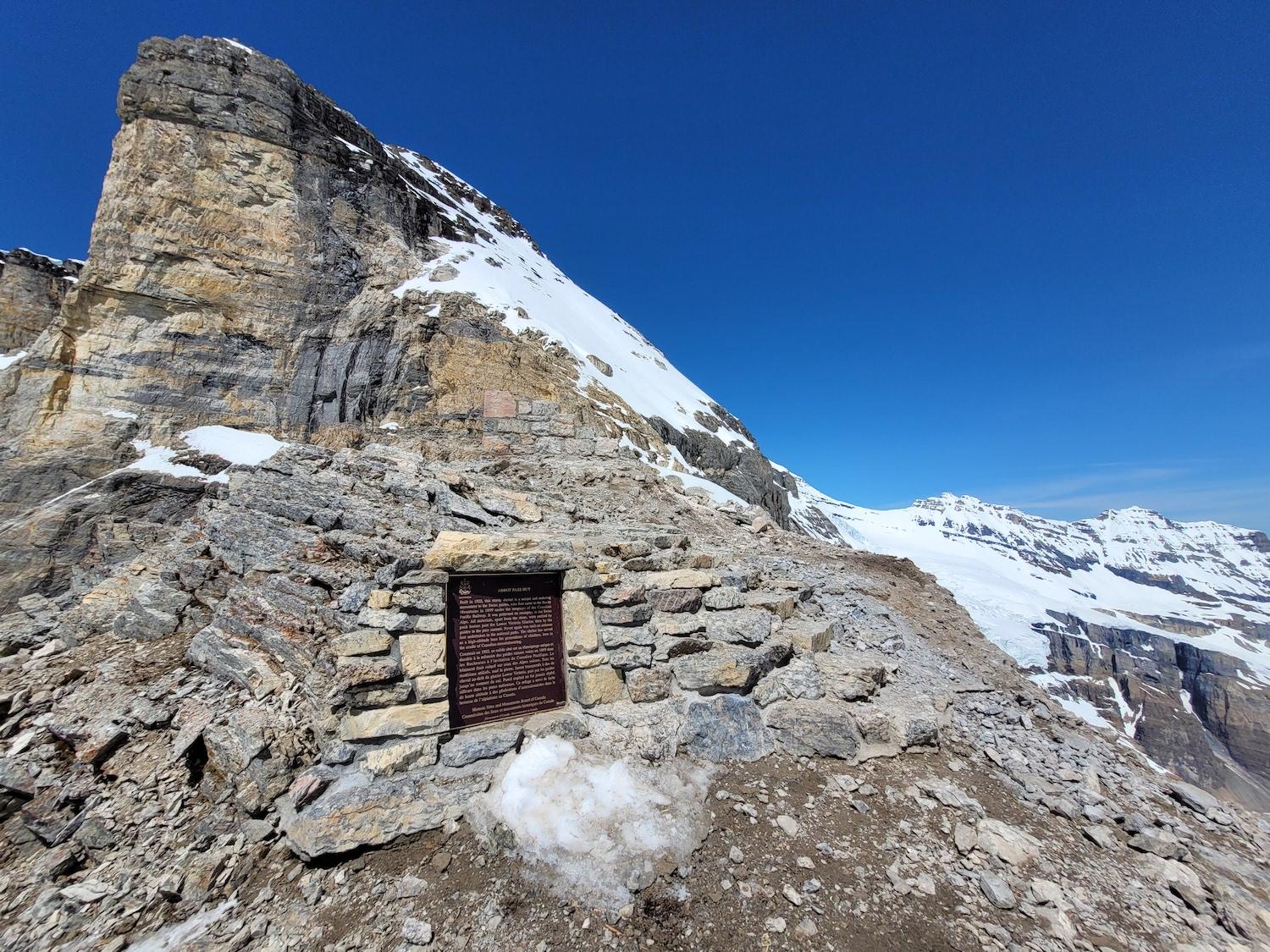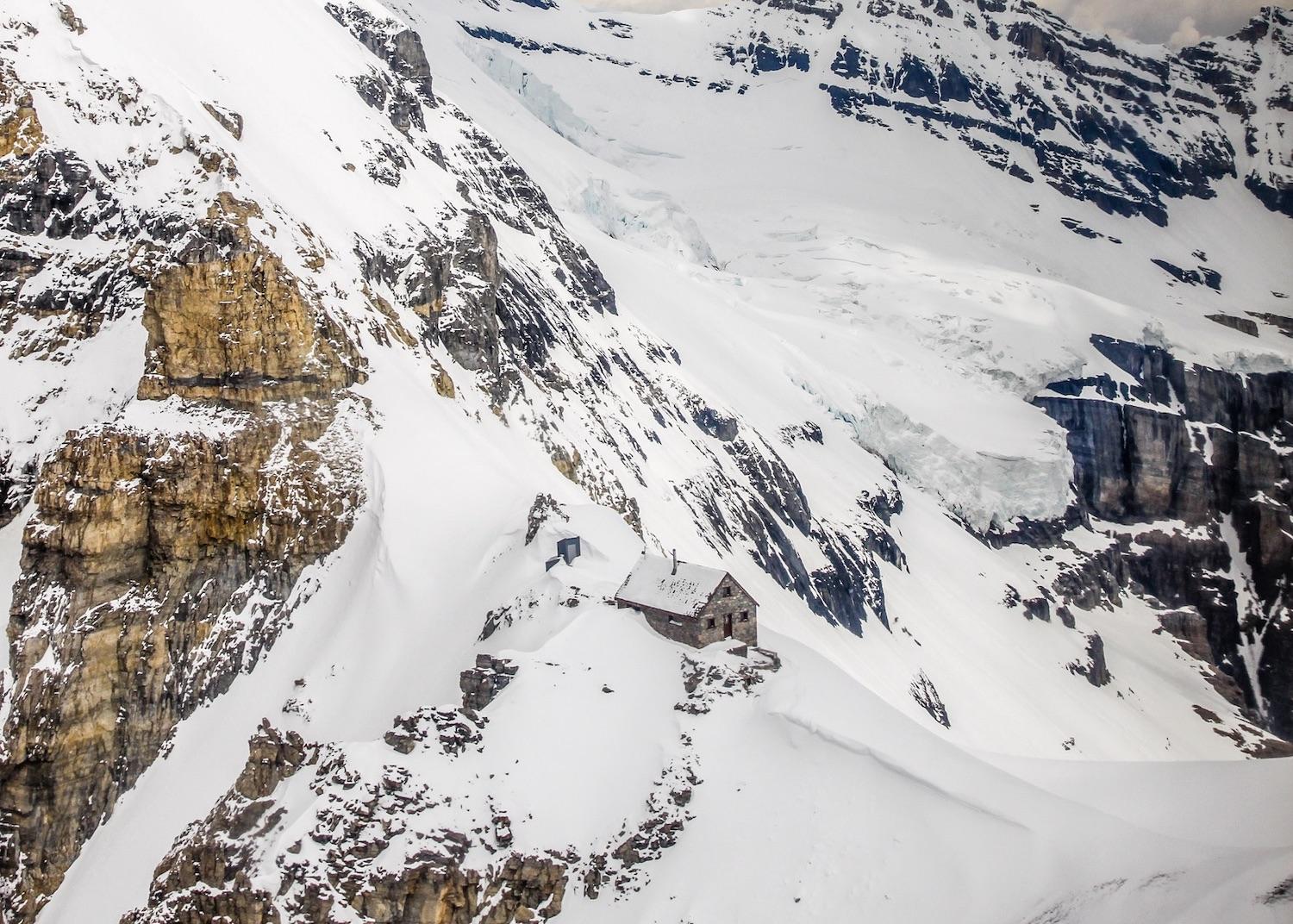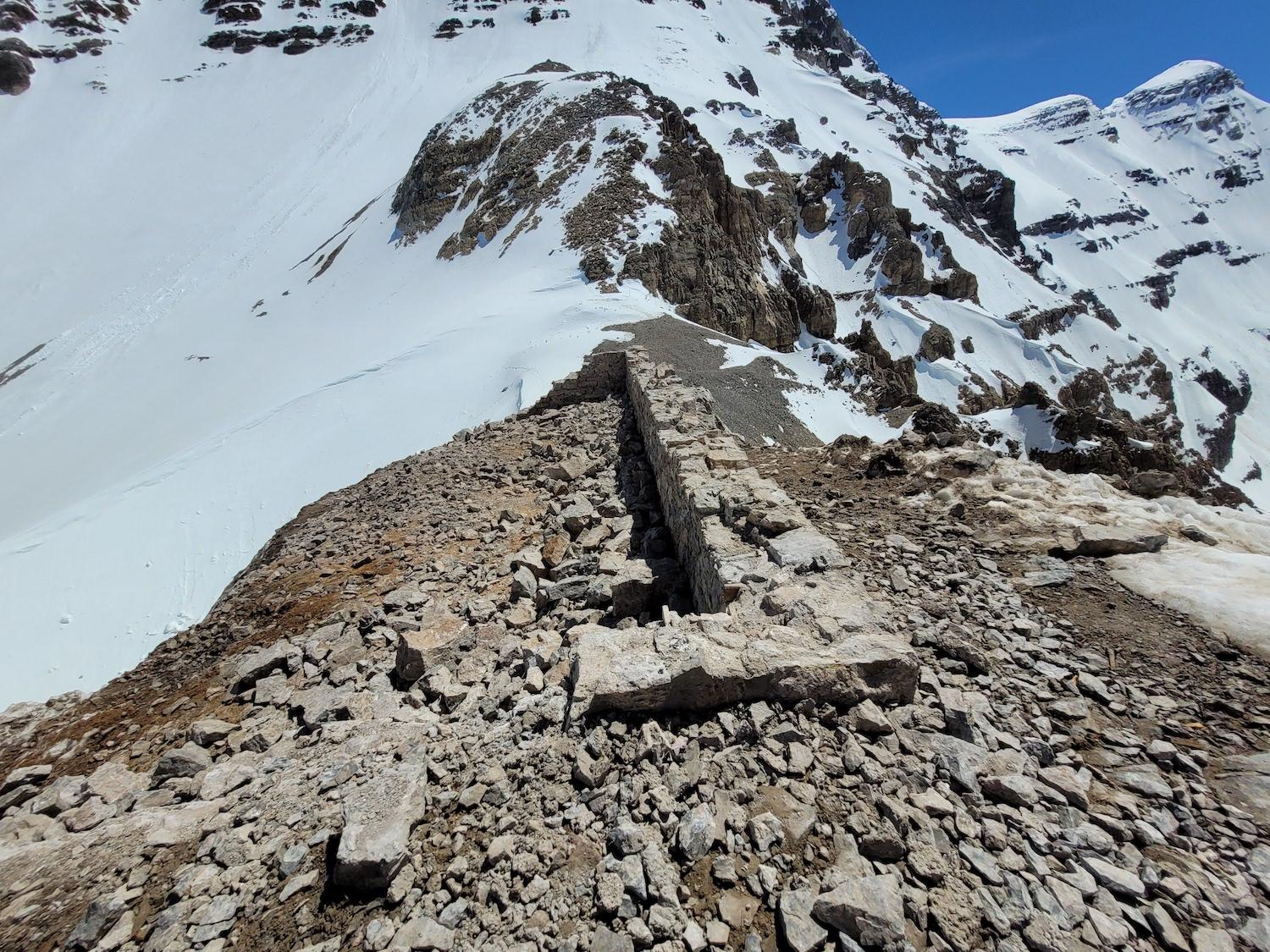
In 2022, most of the iconic stone shelter known as Abbot Pass Hut was removed/Parks Canada, Tangiers Mountain Construction
Parks Canada has launched an online survey to ask people what should be remembered about Abbot Pass Hut National Historic Site.
The survey began Apr. 20 and runs until May 22.
A small working group will review the results and make recommendations to Parks Canada. The iconic stone hut was a classified Federal Heritage Buildings Review Office building, a national historic site designated by the Historic Sites and Monuments Board of Canada, and part of an archaeological site associated with the national historic site. The site’s official name is Abbot Pass Refuge Cabin National Historic Site, but it's better known as Abbot Pass Hut or Abbot Pass Hut National Historic Site.
For 100 years, the hut was a destination and a refuge for hikers, climbers and mountaineers. It was built by hand in 1922 by Swiss mountain guides using locally quarried, hand-cut stone and supplies ferried by boat, carried on horseback and on foot to the 2,925 metre (9,598 feet) col (or pass). The hut blended with the background and withstood snowstorms and gale force winds. The sturdy design and connection to the golden age of Canadian mountaineering made it a national historic site.

A 2010 file shot shows the Abbot Pass hut in winter/Parks Canada
But the hut — between Lake O’Hara in Yoho National Park in British Columbia and Lake Louise in Banff National Park in Alberta — had to be removed after slope erosion and glacial recession caused structural damage despite extensive stabilization efforts and interventions.
On June 30, 2022, Parks Canada and its contractors completed the substantial removal of the hut. Contractors dismantled the hut using powered hand tools. The interior walls, wooden beams, roof, windows and other manufactured materials were dismantled and removed by helicopter. The stone walls were deconstructed by hand and the mortar used to hold the stones in place was separated from the stones. Both the stones — which were quarried on-site from Abbot Pass — and the mortar and have been distributed around the pass.
A section of wall, commemorative plaque and stone steps remain. The removal was documented with photographs and oral history recordings. Notable artefacts, including the 1922 date stone, were removed for preservation.

Now at the Abbot Hut site, only a small ruin remains, including a section of wall, commemorative plaque and stone steps/Parks Canada, Tangiers Mountain Construction
“Abbot Pass Hut was more than a building — it was an experience,” Amy Krause, acting partnering and engagement officer for Banff, Yoho and Kootenay national parks, said in a news release. “Parks Canada is interested in the whole heritage place. When we ask Canadians why this place mattered, we are asking about Abbot Pass Hut but also about the pass, the approaches to and from it, and the activities that took place there over time. You can contribute even if you never visited Abbot Pass or Abbot Pass Hut.”
The goal is to determine why the hut matters to Canadians and if its heritage value has changed since it was designated. Heritage values are what makes a “heritage place” significant to a community of people, Krause explained. "They are comprised of the many meanings and values that people attach to a place. They can be tangible or intangible. Tangible heritage values include things like architecture, archaeology, or natural landforms. Intangible heritage values include things like historic events, stories, memories, sense of place or traditional activities. Taken together, they help us understand what makes a heritage place special to Canadians."
The survey is at LetsTalkMountainParks.ca.
Parks Canada says that a working group led by the Alpine Club of Canada intends to submit a development proposal for a new structure, but it hasn't yet received a formal application and that future proposals will be considered separately from this public engagement process.


